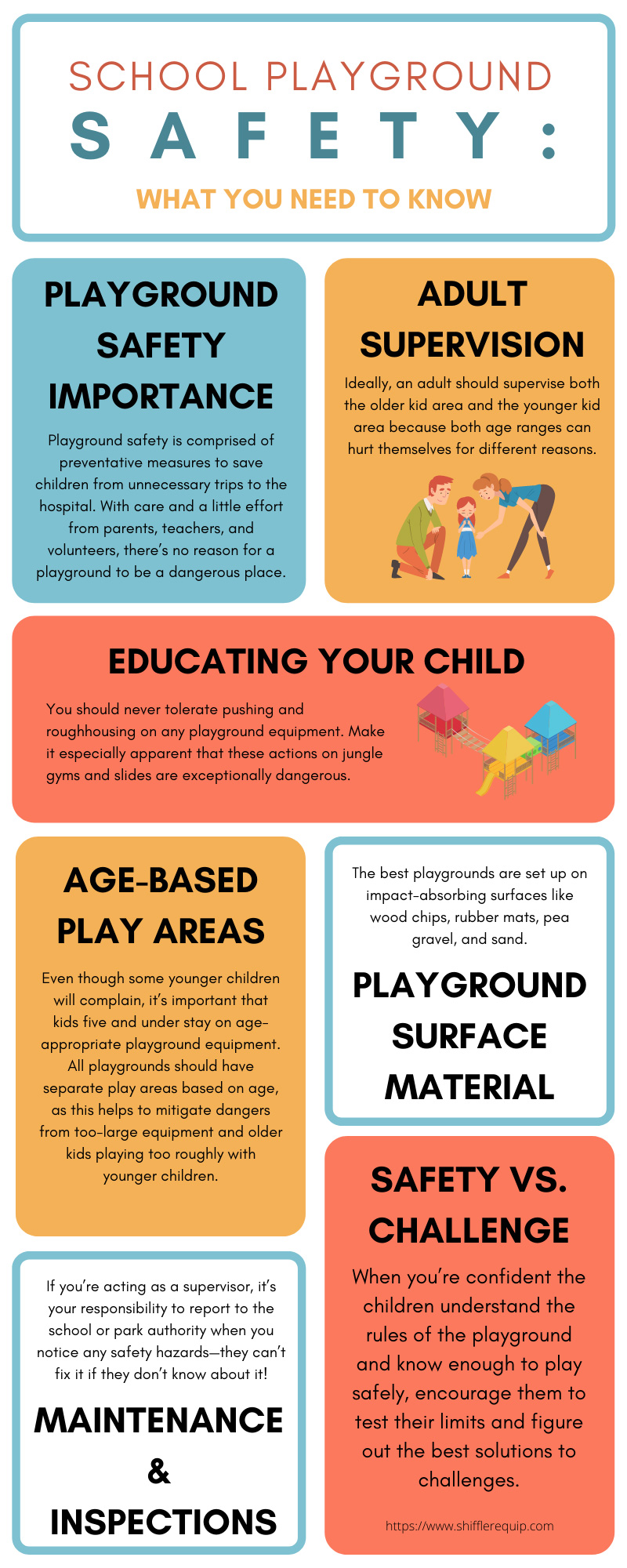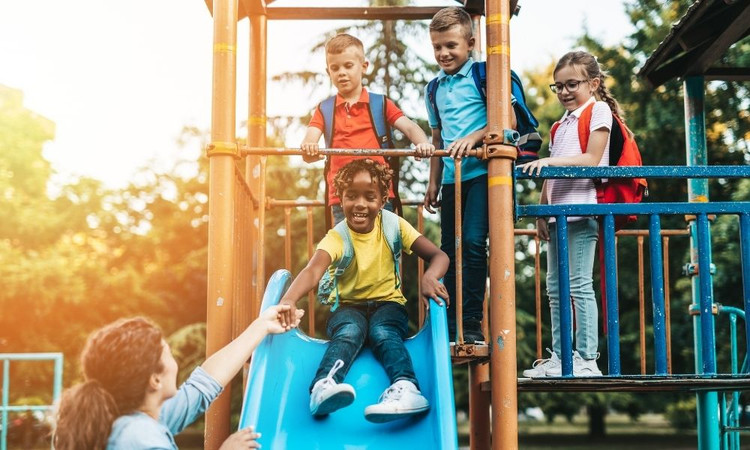School Playground Safety: What You Need To Know...
The best part of a child’s week is playground time, but joy can quickly turn to tears if a playground is unsafe. More than 200,000 children end up in hospital emergency rooms due to playground injuries each year, and we could avoid nearly all of these incidents with supervision and safety information. As far as school playground safety goes, here’s what you need to know.
Playground Safety Importance
Playground safety is comprised of preventative measures to save children from unnecessary trips to the hospital. With care and a little effort from parents, teachers, and volunteers, there’s no reason for a playground to be a dangerous place.
At the end of the day, playground safety comes down to two main things: supervision and education. The likelihood of injury decreases drastically when an adult keeps an eye on the children’s activities, and accidents are less likely to happen when kids understand the rules of the playground and the safest ways to interact with the equipment.
Adult Supervision
While adult supervision is ideal as a preventative measure, it’s also essential when a child does get hurt. Children find ways to put themselves in risky play situations even under your watchful eye, so an adult must be close by in case one of these situations turns ugly.
Ideally, an adult should supervise both the older kid area and the younger kid area because both age ranges can hurt themselves for different reasons. Younger children aren’t always the best at judging distances and danger, and older kids like to push themselves and get daring on the playground.
Educating Your Child
In addition to equipment-specific rules, your children must understand some general playground guidelines as well. You should never tolerate pushing and roughhousing on any playground equipment. Make it especially apparent that these actions on jungle gyms and slides are exceptionally dangerous.
Another important rule is always to ensure that no other children are using equipment simultaneously or are in each other’s way—slide and swing collisions are common and painful. Checking metal equipment in the summertime is important, too. Contact burns happen quickly, and many playground surfaces attract excess heat.
Age-Based Play Areas
Even though some younger children will complain, it’s important that kids five and under stay on age-appropriate playground equipment. All playgrounds should have separate play areas based on age, as this helps to mitigate dangers from too-large equipment and older kids playing too roughly with younger children.
When you feel that the children are ready to graduate to the big kid side of the playground, make sure you’re there to explain any new equipment to them to ensure they play as safely as possible.
Playground Surface Material
The best playgrounds are set up on impact-absorbing surfaces like wood chips, rubber mats, pea gravel, and sand. It’s a good idea to avoid playgrounds without these surfaces, as asphalt, concrete, and grass will only increase the potential for injury.
Another good rule for a safe play space is to look for surfacing that is 12 inches deep and extends six feet in all directions around playground equipment. For swing sets, surfacing should be double the height of the suspending bar in the back and front.
Maintenance and Inspections
All playground equipment and surfacing should undergo regular inspections and maintenance. If you’re acting as a supervisor, it’s your responsibility to report to the school or park authority when you notice any safety hazards—they can’t fix it if they don’t know about it!
Safety vs. Challenge
The best playgrounds find a perfect balance between safety and challenge. Safety is the primary concern when it comes to playground design, but children won’t want to play on a playground covered in bubble wrap. Ideally, a playground offers mental and physical stimulation while providing a safe environment to experiment and explore in.
When you’re confident the children understand the rules of the playground and know enough to play safely, encourage them to test their limits and figure out the best solutions to challenges.
Safety on Different Equipment
Each piece of playground equipment comes with its own set of rules and safety concerns. Teach the children about the guidelines of any equipment they’ll be playing on so they know the safest ways to interact with it.
Swing Set
From kicks to falls, swings are one of the most common sources of playground injuries, but that is typically due to a lack of knowledge rather than a fundamental safety concern. Wood or metal swings are more dangerous than those made of softer materials like rubber or plastic, so suggest a change if your local playground uses unsafe swing materials.
Ensure the children know to sit and only sit on the swings; they should never stand or kneel. Encourage a wide berth around the swing set while other children are at play, on both the front and back sides. And swings are designed for one child at a time—never allow multiple children on the same swing.
Slide
Slides are perfectly safe for kids who know the best ways to use them. Kids should slide down one at a time and should always go down feet-first and sitting upright.
Teach the children to check the bottom of the slide before heading down, and make sure they know to get off the slide promptly. Finally, if the slide has a ladder attached, have the children climb one step at a time with both hands on the handrails.
Climbing Equipment
Climbing equipment is one of the best types of playground equipment, but it does come with its safety concerns. Teach the kids to always know a safe route down if they can’t finish the climb—jumping from high heights is perhaps the most common source of playground injuries.
Additionally, make it clear that children should always have three points of contact with the climbing equipment. This means that only one hand or foot is moving at a time, and the rest are all securely holding onto the equipment.
Now that you’re aware of school playground safety and understand what you need to know, contact us at Shiffler Equipment for all your playground hardware needs!


